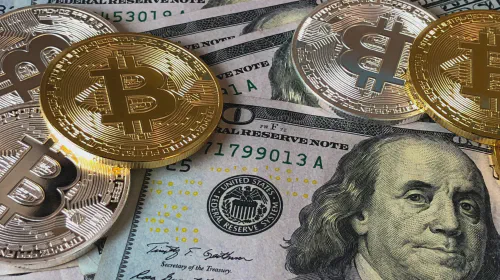Litecoin: A Peer-to-Peer Cryptocurrency for Faster Transactions
Salomon Kisters
Apr 11, 2022This post may contain affiliate links. If you use these links to buy something we may earn a commission. Thanks!
In this post, we’ll look at Litecoin and its use.
But you might ask why Litecoin?
For instance, in October 2021, Litecoin had a market capitalization of $13.42 billion and a $195.13 market value.
As of April 2022, Litecoin still has a market value of $114.52 and an $8 billion market cap.
What Is Litecoin?
Charlie Lee, a former Google engineer, created Litecoin (LTC) in 2011. It was the first alternative coin to Bitcoin. In many ways, Litecoin has similarities to Bitcoin. We will discuss that later.
Just like many cryptos, Litecoin is a peer-to-peer cryptocurrency. There is not much of a difference in that department. Besides, it was created from the Bitcoin Blockchain. The main goal was to enable instant and near-zero cost transactions between people or institutes.
As mentioned earlier, Litecoin has many similarities to Bitcoin. For instance, both cryptocurrencies use the PoW (Proof of Work) system for transaction verification on the Blockchain. However, compared to Bitcoin, Litecoin is faster and lighter.
Use of the Litecoin
Litecoin is primarily used for payments transactions instead of the bank and the other third-party methods. It is designed for cheaper transactions and is highly efficient for daily uses.
How Does Mining Work?
Litecoin uses a similar process compared to the other Blockchain cryptocurrencies when it comes to mining.
The miner should confirm each block transaction. This computationally expensive process requires billions of calculations. That is why we use the term Proof of Work.
However, after the block is verified, the next block goes into the chain. All these Blockchain transactions are anonymous. Also, the miners who have completed the verification process successfully get 12.5 Litecoins. Apart from that, the number of awarded Litecoin halved at regular intervals.
What is Litecoin Halving?
After a specific amount of Litecoin is mined, the reward amount gets reduced. At the start, the reward was 25 LTC, and the next halving reduced the reward to 12.5 LTC.
When Can One Expect the Next Litecoin Halving?
A new Litecoin block is mined every 2.5 minutes.
Compared to Bitcoin, Litecoin is four times more efficient. Therefore, we can expect Litecoin rewards to halve every four years.
For instance, the first halving was initiated in 2015, and the reward was 25 LTC.
The second one was held in 2019, and the reward was reduced to 12.5 LTC. So, we could expect the next halving in 2023 or 2024.
Note: Halving will initiate every 840,000 blocks. Also, 840,000 blocks equal to 84,000,000 Litecoins. Therefore, the above given period might vary according to mining time.
Bitcoin vs. Litecoin
Here are some key metrics on Bitcoin versus Litecoin. Release Date
- Litecoin: Oct. 7, 2011
- Bitcoin: Jan. 9, 2009
Average Transaction Speed
- Litecoin: 2.5 minutes
- Bitcoin: 10 minutes
Mining Algorithm
- Litecoin: Scrypt
- Bitcoin: SHA-256
Halving Interval
- Litecoin: 840000 blocks
- Bitcoin: 210000 blocks
Main Differences Between Litecoin and Bitcoin
We hope that, from the above numbers, you were able to get a good idea about the major differences between Litecoin and Bitcoin.
Let’s have a detailed look.
Transaction Speed
The founder of Litecoin, Charlie Lee, wanted a good transaction speed compared to other cryptocurrencies. And he was successful on that matter too. Litecoin has four times the transaction speed compared to Bitcoin. This is a major advantage compared to Bitcoin.
For instance, Liteocin has a 2.5-minute transaction time. On the other hand, Bitcoin has a 10-minute transaction time. Apart from that, the Litecoin network is capable of handling more transactions than Bitcoin. This fast transaction time is one of the reasons for Litecoin’s huge popularity.
Mining Algorithm
The mining algorithm is one of the key differences between Litecoin and Bitcoin. Litecoin uses a newer algorithm known as the Scrypt. On the other hand, Bitcoin uses an SHA-256 algorithm.
There are several benefits of using the Scrypt algorithm. For instance, by using Scrypt, LTC developers avoid the ASIC-based miners dominating the mining process.
Scrypt allows GPU and CPU-based miners more opportunities. However, the ASIC-based miners were able to adapt to the Scrypt algorithm. Currently, they have the edge.
Nonetheless, the Scrypt algorithm is also less vulnerable to cyberattacks.
Halving Interval
Another factor we cannot miss is the halving interval. You already know the halving interval difference between Bitcoin and Litecoin. However, for the sake of the article, here are those details.
Initial Litecoin Halving Interval – 840000 blocks
Initial Bitcoin Halving Interval – 210000 blocks
When we compare the halving intervals, there is a significant difference between Bitcoin and Litecoin. This difference affects the reward amount.
However, when we compare the pricing of both cryptocurrencies, this difference becomes obsolete. In other words, in the last halving, Litecoin rewarded 12.5 LTC, and Bitcoin rewarded 6.25 BTC. But, as mentioned above, if you compare individual market prices, you will get a good idea about i
Stay informed with the latest insights in Crypto, Blockchain, and Cyber-Security! Subscribe to our newsletter now to receive exclusive updates, expert analyses, and current developments directly to your inbox. Don't miss the opportunity to expand your knowledge and stay up-to-date.
Love what you're reading? Subscribe for top stories in Crypto, Blockchain, and Cyber-Security. Stay informed with exclusive updates.
Please note that the Content may have been generated with the Help of AI. The editorial content of OriginStamp AG does not constitute a recommendation for investment or purchase advice. In principle, an investment can also lead to a total loss. Therefore, please seek advice before making an investment decision.

Immutability in Blockchain: Ensuring Data Integrity and Boosting Trust
Immutability is a core defining feature of the Blockchain that ensures data integrity, boosts trust, and simplifies auditing processes for businesses.

Why Can There Only Be 21 Million Bitcoins? Impact of Bitcoin's Fixed Supply
Discover why there can only be 21 million Bitcoins and the impact of Bitcoin's fixed supply on inflation control and scarcity.

How Many Ethereum Are There, and How Many Are Left?
One of the first questions asked by Ethereum enthusiasts is how many Ethereum are in circulation and how many are left. Let's have a look.
Protect your documents
Your gateway to unforgeable data. Imprint the authenticity of your information with our blockchain timestamp